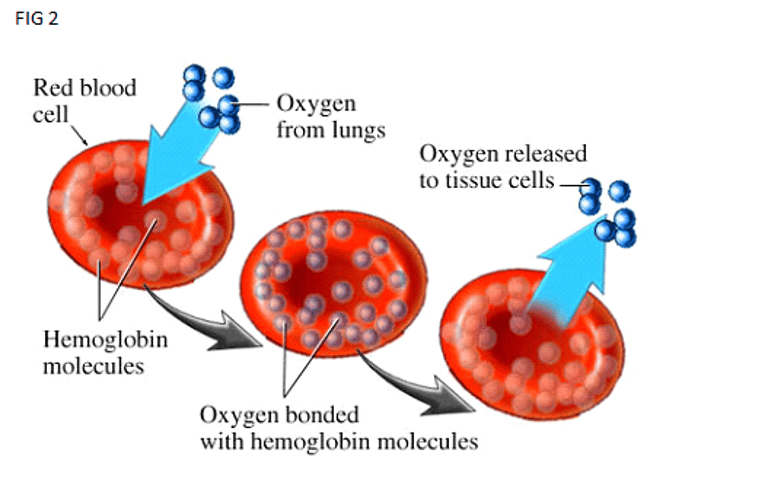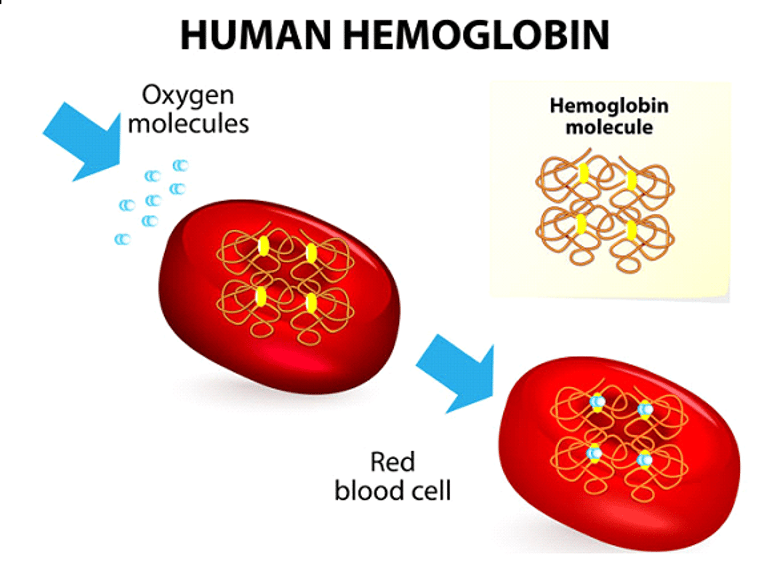ANEMIA FROM IRON DEFICIENCY
Iron deficiency anemia (IDA) occurs because of a lack of the mineral iron in the body. Bone marrow in the center of the bone needs iron to make hemoglobin. Hemoglobin is the part of the red blood cell that transports oxygen to the body’s organs (see figure 1 and 2 below).
Without adequate iron, the body cannot produce enough hemoglobin for red blood cells. The result is called iron-deficiency anemia with a decrease of oxygen transport and delivery to the different tissues and organs
This type of anemia can be caused by:
An iron-poor diet, especially in infants, children, teens, vegans, and vegetarians
The metabolic demands of pregnancy and breastfeeding mothers that deplete a woman’s iron stores
Menstruation – heavy periods.
Frequent blood donation
Endurance training
Digestive conditions such as Crohn’s disease or surgical removal of part of the stomach or small intestine
Certain drugs, foods, and caffeinated drinks
Main sources of iron in nutrition comes from beef, chicken liver, oysters, sardines, lentils, spinach and others. (see figure 3 below)
Symptoms of IDA vary whether the anemia is mild, moderate or severe. However, some symptoms are common and include:
Pale skin and inside of eyelids: Since arteries are apparent in some areas than others, paleness in specific areas such as the face, lower inner eyelid or nails may be a sign of moderate or severe iron deficiency. Lower levels of hemoglobin give a pale pinkish color to the arteries than the usual bright redness.
Tiredness and fatigue: Fatigue is one of the most common signs of iron deficiency. This is due to less oxygen reaching body tissues and organs, depriving them of energy.
Headaches and dizziness: They could be a sign of iron deficiency. The lack of hemoglobin means not enough oxygen reaches the brain, causing these symptoms.
Fast heart beats (tachycardia): In cases of iron deficiency, the heart has to work harder and faster in order to ensure transport of enough oxygen around the body. This can lead to irregular or fast heartbeats and in severe untreated anemia, it can even cause an enlarged heart or heart failure.
Shortness of breath: in the same principle as above, shortness of breath is a symptom of iron deficiency, since low hemoglobin levels mean the body isn’t able to transport oxygen to muscles and tissues effectively. Tiredness is reached easily and can force people to stop their activities.
Other symptoms include fragile and brittle nails, loss of hair, cold feet and hands.
If you’re experiencing any or some of these symptoms, consult your doctor. In some mild to moderate cases of anemia, your doctor may prescribe you some iron supplements. Indeed, supplementation with iron is often recommended. A special formulation that combines iron with 2 special amino-acids and called iron-bisglycinate, provides a better iron absorption and much less gastric or intestinal side effects like heartburns or constipation.






Global
Professional UK registered healthcare company selling specialty products
Contact
Newsletter
info@triopharmltd.com
© 2025 Trio Pharm - Developed By WebVue
